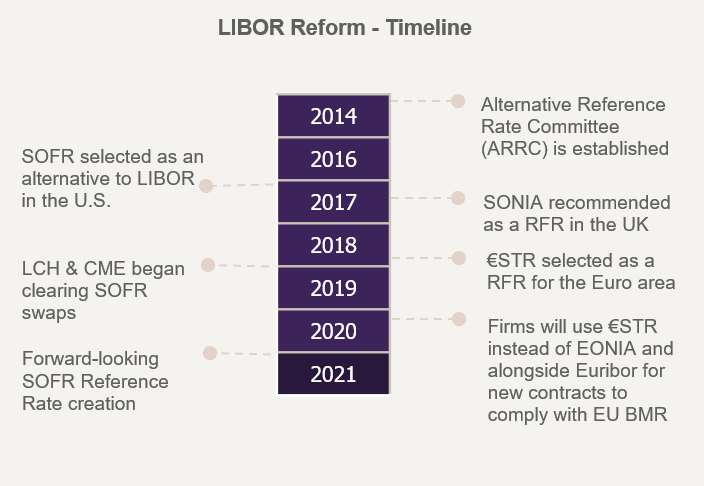The issuance of London Interbank Offered Rate (LIBOR), a reference rate for trillions of dollars worth of derivatives, loans and mortgages’ contracts, will no longer be guaranteed beyond 2021. The decision to replace LIBOR with “risk-free rates” followed the 2012 LIBOR scandal, in which the daily rates were manipulated.
Given that 2021 is quickly approaching, it is imperative for banks to realize that there can be significant variations in the value of these contracts. Banks have to start immediately replacing LIBOR with new risk-free rates such as SOFR (US), SONIA (UK), and €STR (EU). If the banks fail to perform the transition in time, their operational risk will increase significantly.
In the US, the Fed is encouraging banks to stop using LIBOR and start referencing SOFR for new contracts. While challenges certainly exist, such as new rates having purely overnight maturities, there are already industry working groups in place that are developing a consistent approach for rates to have longer maturities.
Since LIBOR is referenced not only in the contracts but is also used as a risk-free rate to price multiple financial products, developing a concrete transition program and roadmap is imperative to mitigate the risks associated with this change.
Challenges
Legal Framework design for trillions of dollars of legacy contracts extending beyond 2021
Managing activity on both LIBOR and the replacement rates in parallel during the transition period
Transitioning existing LIBOR-based contracts to new risk-free rates on the appropriate timeframe
How to prepare for the transition ?
⁄Understanding LIBOR exposures to prioritize the financial product transition
⁄Reviewing and developing contract inventory
⁄Reviewing contractual terms
⁄Preparing to re-negotiate impacted contracts, if necessary
⁄Preparing to handle operational streams in both LIBOR and new risk-free rates
⁄Implementing new financial products
⁄Migrating existing contracts and positions
⁄Developing risk-free rate analytics, clearing and reporting
⁄Understanding treasury and operational considerations
⁄Developing a comprehensive communication strategy that involves impacted stakeholders
⁄Assessing tax impacts
⁄Updating processes and controls
The key to an effective transition will be a robust governance structure in order to oversee the coordinated design and implementation of LIBOR transition efforts across portfolios, procedures, communication and tools.



